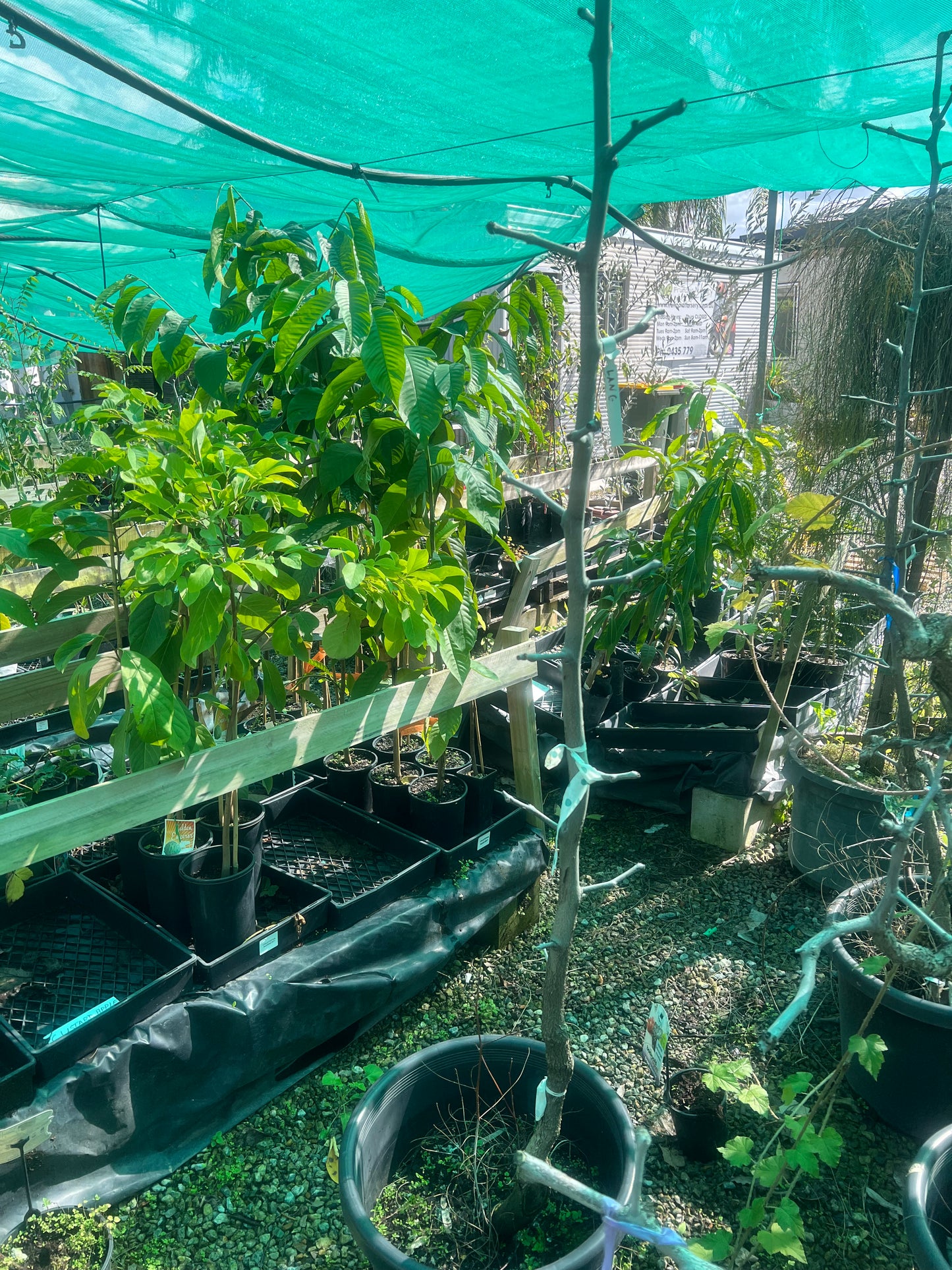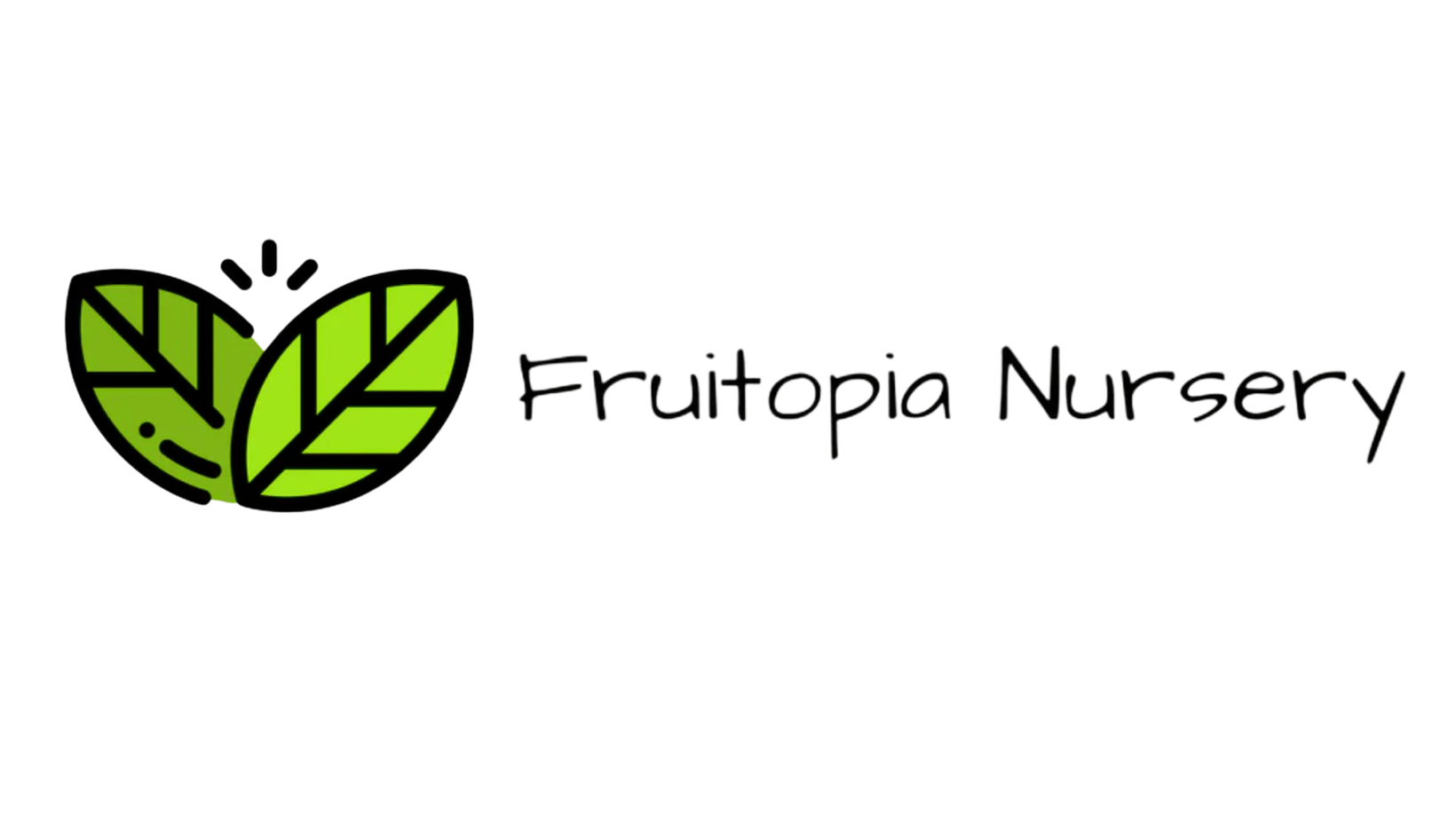Fruitopia Nursery
Jujube - Lang Advanced
Jujube - Lang Advanced
Couldn't load pickup availability
PICK UP ONLY Lang Jujube Trees are currently 1.5m tall in 50lt pots. This is a grafted tree and please be aware that the tree loses all of its leaves during winter. It is recommended not to water the tree in its deciduous state but give it a good amount of fertiliser coming into spring time and start to water again as the leaves emerge. The trees are in 200ml pots and have an established root system.
Description/Taste
Current Facts
Nutritional Value
Applications
Ethnic/Cultural Info
Geography/History
Specifications of Jujube - Lang
Preferred ClimateWarm Temperate, Arid (Dry)
Grown FromGrafted
Max Height (when in the ground with good conditions)2-5m
Plants required to Pollinate1 (Self Pollinating)
Can it Handle Frosts?Yes
Amount of leaves in Winter?No Leaves (Deciduous)
Quarantine Restrictions to these AreasWA
Suitability in PotsYes with 35L+ Pot
Water RequirementsDrought Hardy (Little Watering)
Is it a Dwarf Fruit Tree?Can be pruned to 2m
Time to Fruit/Flower/Harvest2-3 Years
Sun or ShadeFull (Sun:80%-100%)
Preferred Soil TypeGood Drainage
Soil pHNeutral (6.6-7.3pH)
How to care for your fruit tree
How to care for your fruit tree
When you receive your fruit trees please unpackage them as soon as possible and give them some water. It is normal for some of the fruit trees to wilt slightly in transit but they will revive quickly with care. Please water your trees everyday.
Planting Instructions:
In a pot: If you are planting your fruit tree in a pot long term we recommend using a 3-50 litre pot . Use premim potting mix or rich garden soil, place a saucer under the pot and grass clippings or mulch around the tree to help the tree retain moisture. Water every 1-2 days continually.
In the ground: Dig a hole 2 times larger than the size of the pot or bag the tree is currently in. Squeeze the pot to loosen the root system before planting. Water well and add mulch or grass clipping around the tree. Water daily for the first year and then after that the tree should be able to sourse its own water through its root system, but continue to observe the tree and water if necessary.
Wait 1 month after planting before fertilising to avoid burning the roots.
Special care instructions for lychee, avocado and bananas, please see the product description for each tree.
Fertiliser: Fertilise your trees once a year in springtime following the correct instructions on the packet.
Pruning: Pruning your tree ecourages new gowth and a bushier growth habit. At the end of summer we recommend pruning the tips of the tree branches by 2-3cms or you can prune the tree to a desired shape.
If you have any care questions please give us a call and we will be happy to assist you.
Shipping
Shipping
Shipping Costs:
Brisbane and Gold Coast Metro Suburbs: Free Shipping
Other Areas QLD: Shipping costs may apply based on your location and the number of trees purchased. If there are any additional shipping fees you will be contacted after you purchase and given the option of a refund if you desire.
Other Areas: NSW, ACT, VIC and SA. $30 per order or free shipping if you buy 4 or more trees.
Please allow 7-10 business days for your order to be packed and sent.
If you find a tree you would like to purchase we recommend doing so promptly as often our stock sells out shortly after being listed and then wont be available again until our next re-stock.
Our maximum box size is 1.06m. Some trees may need to be trimmed to fit into the packaging, this does not damage the tree, it encourages the tree to grow new branches and become bushier.
You may not be sent the exact tree pictures on the website but it I’ll be very similar in size and height. All of our trees are grown outside in the sun, so they are fully accustomed to Queensland weather conditions. Due to that, the trees may have minor leaf imperfections from the sun, but the overall health of the trees is superb.
Orders are shipped by courier and usually take 1-3 business days if you are in Brisbane or the Gold Coast and other Metro areas or up to 3 weeks for other locations. Plants are packaged carefully with water in the packaging.
Please follow all care instructions for your tree/s as outlined on the website in the product description of each tree. MOST IMPORTANT IS WATERING YOUR TREE EVERYDAY (preferably in the morning).
If there are any issues when your package arrives please contact us via email at info@fruitopianursery.com.au for a promt reply.
Return policy
Return policy
At Fruitopia Nursery we love plants and we want you to love your plants too, so if there are any issues with your purchase, we’re here to help. Please carefully follow all care instructions for your new plants, paying particular attention to their watering requirements.
If you are unhappy with your purchase in anyway please contact us by email and we will do our very best to resolve the situation.
Depending on the problem we will be happy to offer a refund, partial refund or exchange at our sole discretion.
If your goods are damaged on arrival, please take a photo and contact us immediately via email so that we can follow up the matter with the delivery company.
Please do not post plants back without first contacting us via email info@fruitopianursery.com.au






